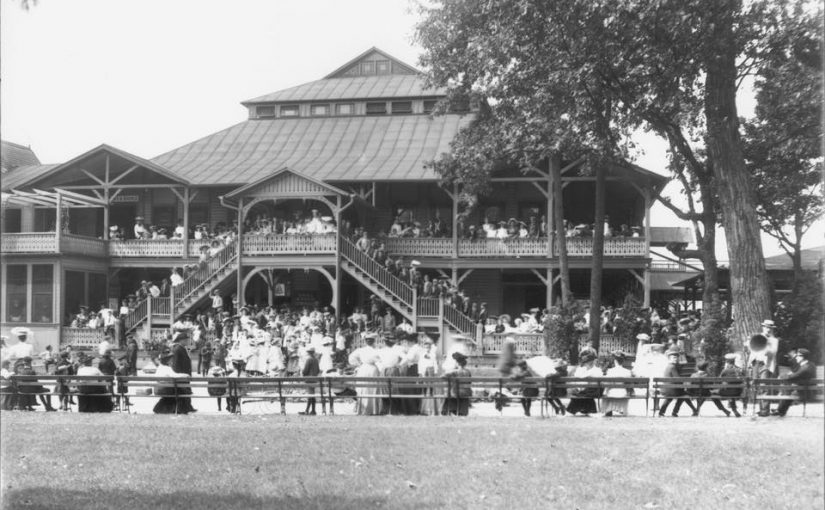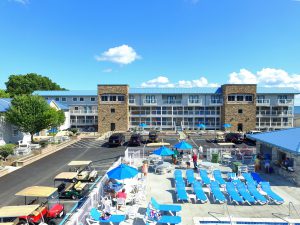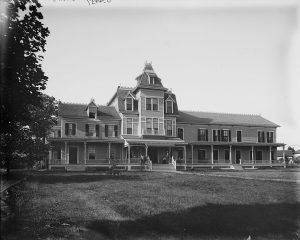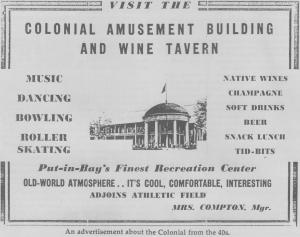Put-in-Bay's Hotel History: An Inspiring Heritage

Put-in-Bay is the crown jewel of the Lake Erie Islands. Tourists have flocked to Put-in-Bay, which is also known as South Bass Island, for 200-plus years. The island has a rich history, and many are unaware of the important role it played in the War of 1812.

During the war, Put-in-Bay served as Commodore Perry’s headquarters. It was from the harbor that Perry and his naval fleet defeated the British in the pivotal victory of the war—the Battle of Lake Erie.
Since that day, Put-in-Bay has symbolized joy, peace, and freedom, and visitors would come to the island to experience such wonders. Others would stop over just to enjoy the day. Unfortunately, guests were unable to stay overnight because there weren’t any hotels or lodgings on the island for tourists.
At present, top-rated establishments like the Put-in-Bay Condos or the classic Island Club rentals afford tourists an opportunity to capture more time on the island. This, however, wasn’t always the case. In fact, approximately 50 years passed after the War of 1812 before island-goers were able to stay overnight.
Put-in-Bay’s First Hotel
The island’s very first hotel had a modest beginning. A man by the name of Frederick Cooper found an opportunity for business and he added rooms to a house near the boat landing sometime in the early 1860s. He built more rooms as the demand for them increased.
Several years passed, and, in 1867, he took on a partner (Andrew Decker) and named their growing establishment The Island Home. They expanded The Island Home over the next few years and added a bowling alley, a bar, a beer garden, and some stables. In 1879, they sold it to Henry Beebe, who re-named the lodging the Perry House.
Beebe hired island contractors to further upgrade the Perry House with a three-story wing, an ice cream parlor, and a ballroom. 300 guests could stay at The Perry House at a time, and attendees grew accustomed to seeing Mrs. Beebe host formal dinners nightly at 6 p.m. For about 25 years, the venue was an attractive destination for ballroom dancing, parties, and a lakeside getaway.
The Perry House was sold in 1910 and re-named the Hotel Commodore. A few years later, the Schlitz Brewing Company bought the house, and, sadly, on August 23, 1932, the hotel caught fire and burned to the ground.
The Put-in-Bay House: A Colonial to Remember
The Put-in-Bay House came into existence while the first island hotel was developing and changing. In 1861, Joseph W. Gray, an editor for The Plain Dealer, purchased the majestic Put-in-Bay “White House.” He turned this landmark, which was once owned by island developer A.P. Edwards, into a rooming house.
Over the next few years, the house found itself owned by several different people until Sweeney, West and Company took possession. Several additions and expansions were made, including majestic fountains in front of each wing and an upgraded dining room that could seat about 1000 people. Much like the Hotel Commodore, Sweeney, West, and Company’s Put-in-Bay House became a vibrant, exciting destination for over a decade.
The Put-in-Bay House was to be the venue of an extravagant gala on August 30, 1878. Donors and VIPs rushed to the island for a charity benefit for those affected by yellow fever. 1000 tickets were earmarked for the event, but the house caught fire and burned to the ground before the party.
Years later, the house was rebuilt and resurrected as the famous Colonial Hotel. The Colonial stood for over 100 years, but it also burned down in 1988, which has led many to believe that the land is cursed. Today, the Beer Barrel Saloon and Tipper’s Restaurant stand where the famous Put-in-Bay House and Colonial once did. You can read more about the fascinating tale of the Colonial Hotel here.
More Historic Hotels
In 1871, the Hunker House opened on the eastern edge of the village park. The hotel featured its own vineyard and orchard. The Hunker House became famous for its wines, ice cream, and pies, which were all made from homegrown fruits. The Hunker House, like many other island properties throughout the years, encountered multiple owners and name changes (i.e. Ward Summer Resort, Detroit House, Crescent Hotel). This establishment housed about 140 guests in its prime, and it closed in 1971.
In the early 1800s, the Gill House appeared on the scene. This smaller hotel accommodated 40 people. As time passed, it, too, faced name changes, depending on the owner. During one era, it was known as Bon Air. At another point, it became the Smith Hotel. Then, it morphed into the Hotel Oelschlager. The Hotel Oelschlager boasted an attached restaurant and general store where visitors could purchase groceries and souvenirs. Today, the building is known as the Country House—a famous gift shop, antique store, and landmark.
Eagle Cottage began as a boarding house, but it was purchased in 1946 and renamed the Friendly Inn. In 1970, it was sold, and it now stands as the Crew’s Nest—a boat club and resort.
Other lodgings, like the Bay View House, the Reibel House, and Smith’s Hotel have come and gone, but the Park Hotel (built in the 1870s and originally known as the Deutsches Hotel) remains today. It features 26 Victorian-style rooms and is located right next to the Round House Bar.
While Put-in-Bay has been home to many acclaimed hotels, perhaps none is more famous (or infamous) than Hotel Victory.
The “Grandest” Island Hotel
Hotel Victory was to be the “grandest” hotel in America and a luxurious destination. In fact, when it opened in 1892 (and was fully completed in 1896), it was, indeed, the largest hotel in the United States. Hotel Victory featured miles of carpet, a boardwalk to the beach, fountains, a pool, and much, much more. Regrettably, it, too, faced an untimely ruin.

Put-in-Bay: Continuing the Legacy
Put-in-Bay’s hotel heritage is proud and fascinating. We’re proud to continue the legacy of these mighty establishments and provide island-goers with first-class hotel accommodations.




